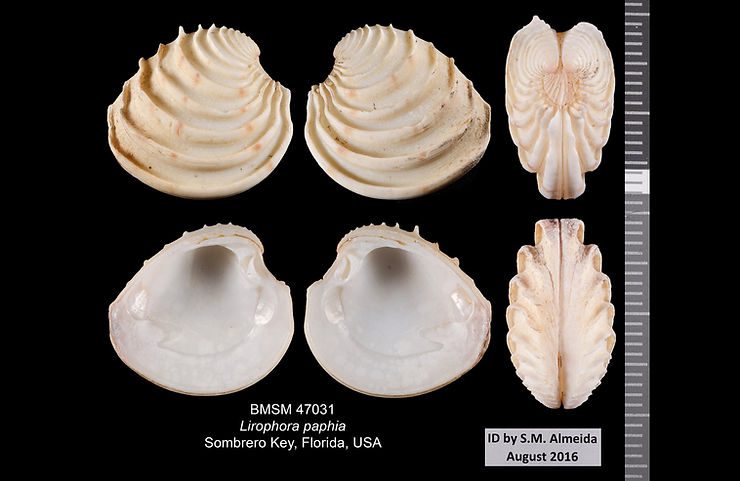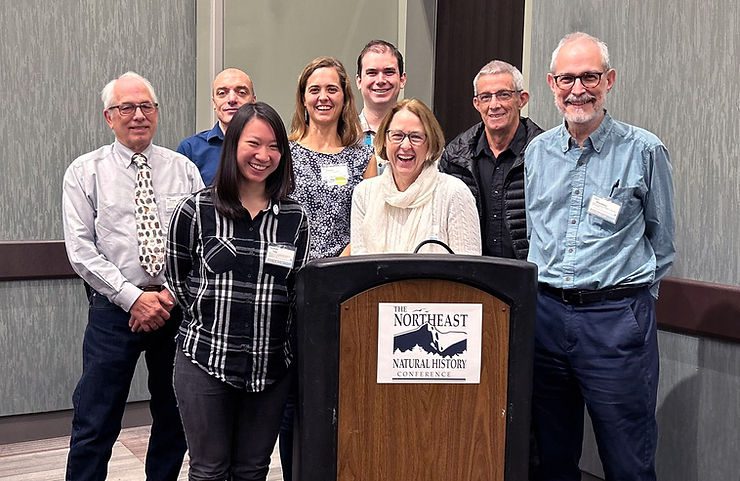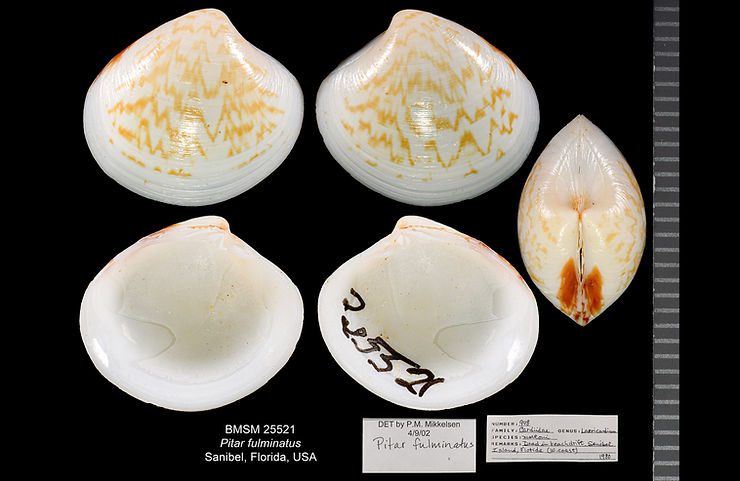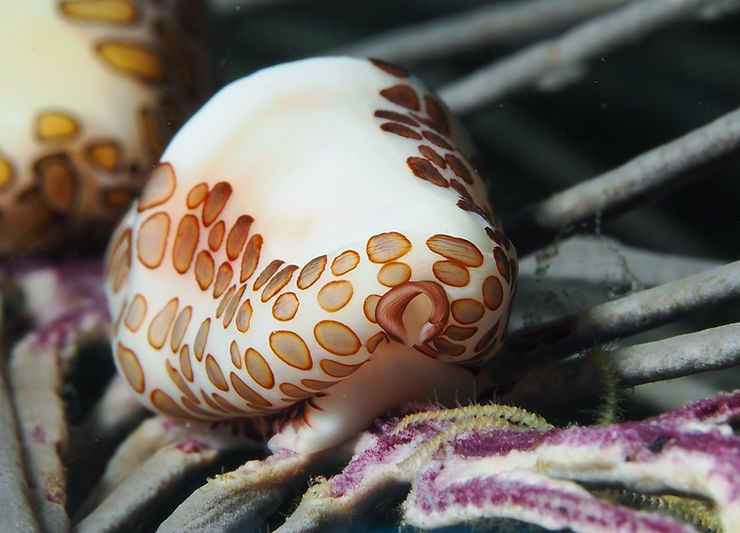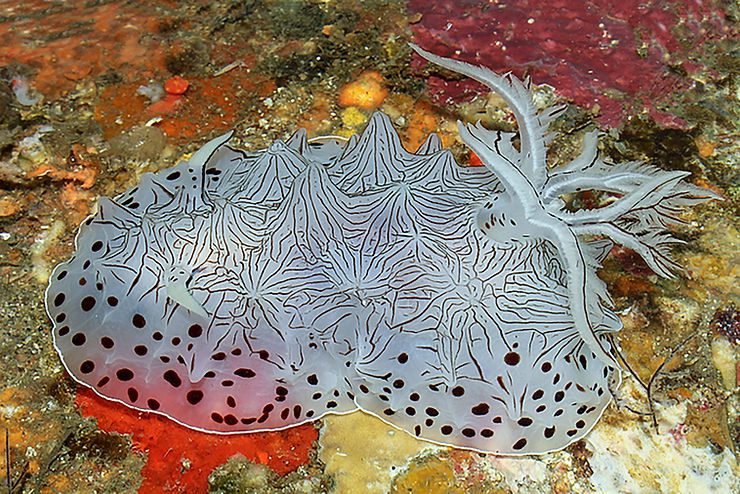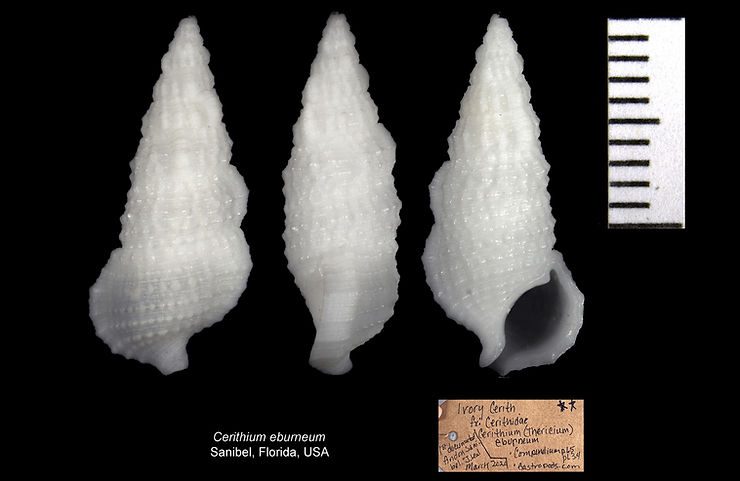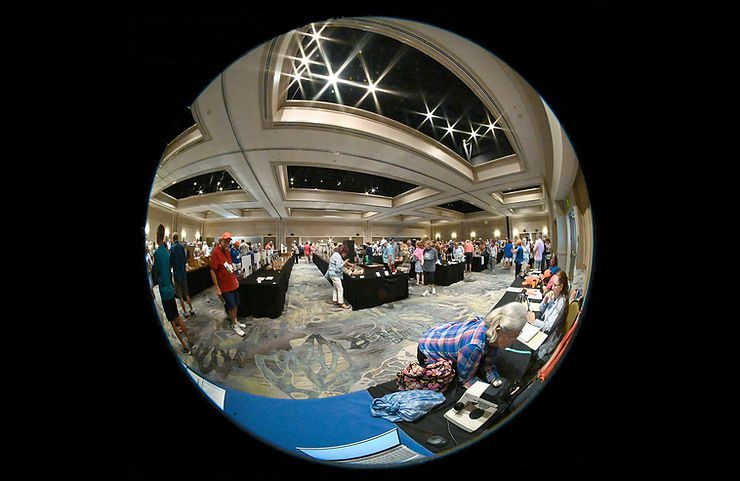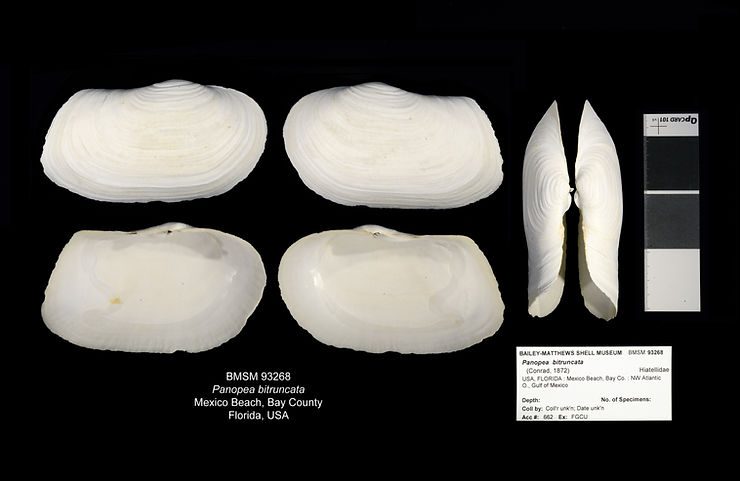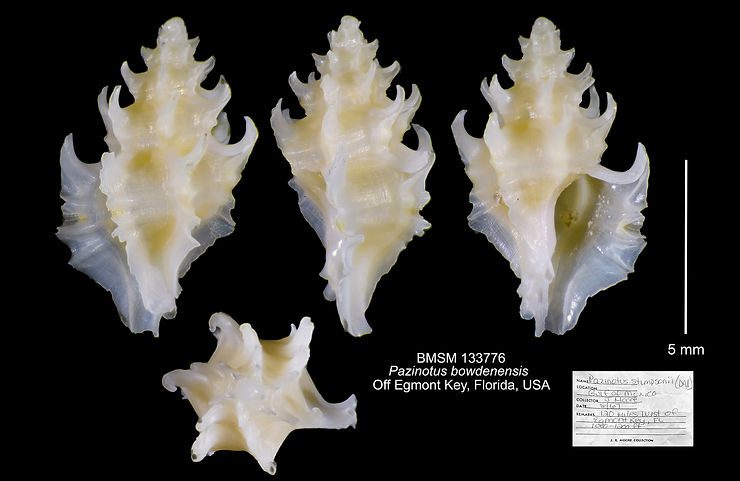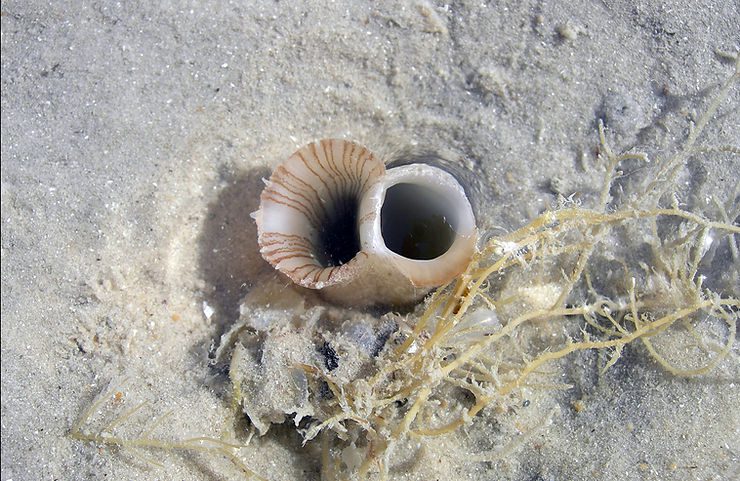
The Angel Wing and Its Siphons
Angel Wings (Cyrtopleura costata) live buried in sand or mud, inhabiting a cylindrical tunnel, which they occupy for the duration of their lives. Like most bivalve mollusks, Angel Wings are filter feeders, pulling water in through an incurrent siphon, pushing it through the gills, where the food particles are retained, then returning the water back to the environment via an excurrent siphon. The siphons are extensible, relatively long, and longitudinally fused. The incurrent siphon is wider than
